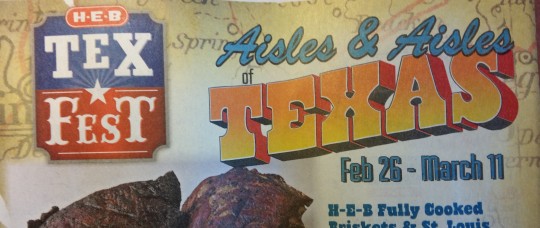Can a Big-Box Supermarket Create ‘Liking’?

Most readers here know that one of the six principles of persuasion proposed by influence expert and recent Pubcon keynoter Robert Cialdini is “liking.” Liking can be established by displaying shared attributes – we both went to the same college, we both have Siamese cats, etc. But can faceless companies generate a similar reaction?
My answer to that rhetorical question is, unsurprisingly, “yes.” A key part of Apple’s success over the years, I think, is due to their exploiting a shared social identity with their users – see Revealed: How Steve Jobs Turns Customers into Fanatics, written while their late CEO was still with leading the firm.
The latest example of a profound liking effect for a company using some of the same interpersonal approaches described by Cialdini is the Texas supermarket chain, H-E-B. At Forbes.com, I wrote The Smartest Supermarket You Never Heard Of about a variety of brain/behavior-oriented strategies employed by H-E-B.
That post turned out to be my most-viewed article to date at Forbes, and produced a flood of comments. Other than a handful of San Antonio residents who apparently resent the expansion of an H-E-B property in their downtown area, the commenters were almost universal in their like (or love) for H-E-B.
We’re All Texans!
While having stores in just one state might be seen as a disadvantage for chains with regional or national aspirations, H-E-B turns their Texas exclusivity into a huge advantage by constantly showing off their Texas heritage.
It probably doesn’t hurt that Texans exhibit an unusual level of state pride.
In the Forbes post, I showed a panoply of Texas-themed products and promotions. Many, many products are labeled with Texas imagery or a particular location in Texas, from Houston to Hill Country.
Not long after I published that post, I ran across one of H-E-B’s biggest Texas promotions yet, a two-week long “Texas Fest” featuring, you guessed it, even more Texas-themed products than usual.
H-E-B never misses the opportunity to hammer home the fact to their customers that, “We’re like you, we’re from Texas.”
Doing Likable Things
Beyond establishing their shared social identify, H-E-B goes out of its way to do likable things. I detailed their sampling and other strategies in my Forbes piece, but the other day I discovered yet another way they pamper their customers. On a rare early-morning stop at the store, I was desperate for coffee and stopped by their cafe to buy a cup. I was fishing some bills out of my wallet when the associate behind the counter told me, “Help yourself, it’s free. It’s right there, the cups are next to the pots.”
Of course, the featured brews were H-E-B products. Beyond the goodwill points this scores for H-E-B, serving customers a free hot beverage is yet another brain-oriented strategy. In Heat Up Sales – With Coffee! I quote psychology professor and researcher John Bargh, “Physical warmth can make us see others as warmer people, but also cause us to be warmer – more generous and trusting – as well.” (The caffeine boost can’t hurt, either!)
Get Liked: Find Your Shared Attributes
Your business may not be able to exploit Texas-sized state pride like H-E-B, but chances are you have attributes you share with your customers. Is there a geographic identity? Are you fellow car enthusiasts? In a one-on-one sales setting, you can almost certainly find multiple things you have in common.
Even if you are working with a diverse customer base, you may find your products offer a point of common interest. Or, failing that, broadly shared attributes (say, you are a dog lover, coffee aficionado, or outdoor sports enthusiast) may work with a portion of your potential customers. And even for the ones who don’t own dogs, the photo of you and your adorable pooch will at least humanize you and your company a bit!
